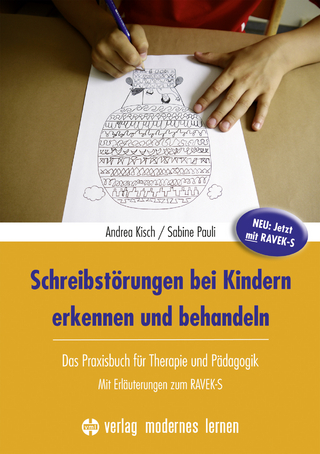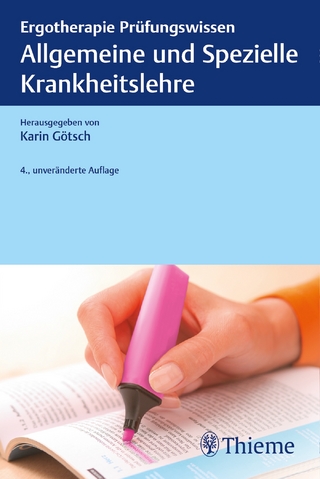
Interprofessional Perspectives for Community Practice
Routledge (Verlag)
978-1-032-95734-0 (ISBN)
Authors and editors Drs. Pizzi and Amir discuss and illustrate a client-centered preventive and health, well-being and quality of life approach rooted in best practice principles from interprofessional literature and firsthand experience. The text illustrates how allied health professionals implement those principles in their everyday and traditional practices with an emphasis on exploring health and well-being issues. Interprofessional Perspectives for Community Practice provides detailed guidance in program development and implementation.
What’s included in Interprofessional Perspectives for Community:
Clinical anecdotes on successful community practices
A focus on primary and secondary prevention
Assessments, interventions, and community practice examples
Descriptions of community-based practice settings such as adult day care, independent living programs, hospice, and home health care
Health and wellness across the lifespan
Bonus chapters available online as PDFs for readers
The first text of its kind to weave interprofessionalism, community practice, and health, well-being, and quality of life, Interprofessional Perspectives for Community Practice: Promoting Health, Well-being and Quality of Life is for all health care workers and students who wish to transfer practice skills from the clinical setting to a population-based program development model.
Michael A. Pizzi, PhD, OTR/L, FAOTA, has been an occupational therapist since 1981. He has published over 70 peer-reviewed articles and 25 book chapters, and is co-editor of a health promotion and wellness textbook. His research has focused on hospice, HIV/AIDS, wellness, and childhood obesity, and he is the only occupational therapist to guest edit the American Journal of Occupational Therapy on three different topics (AIDS, wellness, and childhood obesity). In occupational therapy, he has created clinical pathways in all of these areas. Dr. Pizzi created the first health and wellness interprofessional conference in 1993 and since then has focused on health, well-being, and quality of life in community practice. Dr. Pizzi developed the frst valid and reliable wellness tool that could be used inter-professionally called the Pizzi Health and Wellness Assessment (PHWA), as well as a health and wellness model called the Environment–Health–Occupation–Well-Being (E-HOW) Model. He created Touching Humanity, a not-for-profit whose motto is "given opportunity, always able." Mark Amir, PT, DPT, MPH, DipMDT, is currently the Director of Clinical Education at DUNY – DPT and Residency Director at JAG Physical Therapy. His passion is to help students integrate newly acquired didactic skills that match their innate strengths to their clinical setting, which can positively impact the lives of their clients, themselves, and their community. Matching clinical experiences with a student-centered focus allows graduates and experienced clinicians to thrive in their chosen physical therapy career. Dr. Amir was a private practice, multi-state outpatient physical therapy owner for over 20 years.
Introduction Part I Principles for Community Practice to Promote Health, Well-Being, and Quality of Life Chapter 1 Promoting Health, Well-Being, and Quality of Life: Shifting the Paradigm of Health Care Chapter 2 Diversity, Equity, Inclusion, and Justice With Community-Oriented Interprofessional Practice Chapter 3 Theoretical Perspectives for Interprofessional Community-Oriented Practice Part II Promoting Physical Health Chapter 4 Promoting Physical Health: Infants, Children, and Youth Chapter 5 Promoting Physical Health: Adults Chapter 6 Promoting Physical Health: Older Adults Chapter 7 Promoting Social Health: Children and Youth Chapter 8 Promoting Social Health: Adults Chapter 9 Promoting Social Health: Older Adults Part IV Promoting Occupational Health and Productivity Chapter 10 Promoting Occupational Health and Productivity: Children and Youth Chapter 11 Promoting Occupational Health and Productivity: Adults Chapter 12 Promoting Occupational Health and Productivity: Older Adults Part V Promoting Mental and Emotional Health Chapter 13 Promoting Mental and Emotional Health: Children and Youth Chapter 14 Promoting Mental and Emotional Health: Adults Chapter 15 Promoting Mental and Emotional Health: Older Adults Part VI Promoting Family Health Chapter 16 Promoting Family Health: Children and Youth Chapter 17 Promoting Family Health: Adults Chapter 18 Promoting Family Health: Older Adults Part VII Promoting Spiritual Health Chapter 19 Promoting Spiritual Health: Children and Youth Chapter 20 Promoting Spiritual Health: Adults Chapter 21 Promoting Spiritual Health: Older Adults Part VIII Developing Interprofessional Practice Chapter 22 Building Community Capacity From an Interprofessional Perspective Using Small Grants Chapter 23 Community Program Planning, Design, and Evaluation
| Erscheint lt. Verlag | 4.11.2024 |
|---|---|
| Verlagsort | London |
| Sprache | englisch |
| Maße | 216 x 279 mm |
| Gewicht | 1030 g |
| Themenwelt | Sachbuch/Ratgeber ► Gesundheit / Leben / Psychologie |
| Medizin / Pharmazie ► Physiotherapie / Ergotherapie ► Ergotherapie | |
| ISBN-10 | 1-032-95734-4 / 1032957344 |
| ISBN-13 | 978-1-032-95734-0 / 9781032957340 |
| Zustand | Neuware |
| Informationen gemäß Produktsicherheitsverordnung (GPSR) | |
| Haben Sie eine Frage zum Produkt? |
aus dem Bereich


